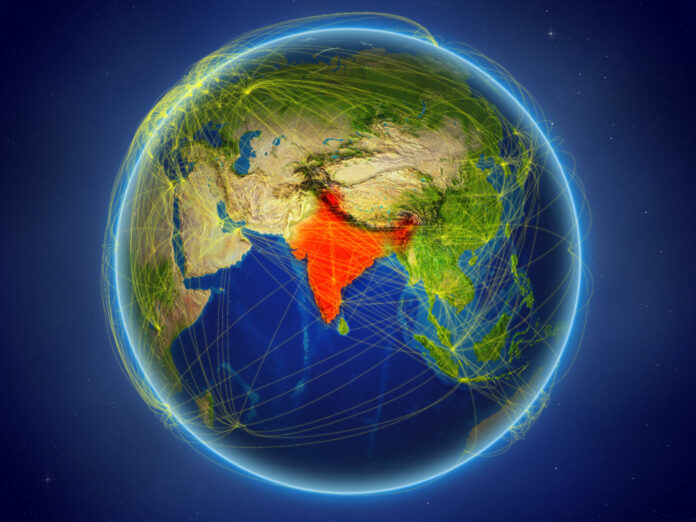The new satcom rules signal the country’s efforts to tighten national defenses as foreign interest grows
India’s Department of Telecommunications (DoT) has introduced a sweeping set of new security guidelines for satellite communication (satcom) providers, signaling both an effort to tighten national defenses and a high-stakes gatekeeping move amid increasing foreign interest in the country’s rapidly growing satcom market.
The new rules apply to all operators functioning under the Global Mobile Personal Communications by Satellite Services (GMPCS) license, a regulatory requirement for companies aiming to deliver satellite-based connectivity in India. Providers must now comply with more than 20 new security conditions. These include mandates around data localization, real-time monitoring, user terminal registration, geo-fencing, and integration with India’s indigenous NavIC positioning system — a homegrown alternative to GPS — by 2029.
The updated framework arrives just as major global players like Elon Musk’s Starlink, Amazon’s Project Kuiper, and Bharti Airtel-backed Eutelsat-OneWeb are racing to either enter or scale up their presence in India.
Starlink, in particular, has faced regulatory delays since first applying for GMPCS licensing in 2022. Following multiple meetings with India’s telecom minister and the submission of a revised proposal, the SpaceX-backed satellite internet provider is reportedly close to obtaining approval. However, under the updated DoT guidelines, Starlink — like all other satcom contenders — will need to ensure end-to-end compliance with India’s security protocols, particularly around data sovereignty and lawful interception, before it can launch commercial services.
Bharti Airtel-backed Eutelsat-OneWeb, meanwhile, has already cleared key regulatory hurdles. The joint venture secured GMPCS licensing and began offering India-specific satellite broadband services in 2024. Bharti Group Chairman Sunil Mittal described the service as “ready to serve” India’s remote and underserved populations. Yet, even for a frontrunner like OneWeb, the DoT’s tougher standards mean ensuring that all operational infrastructure — including gateways, Points of Presence (PoPs) and user authentication systems — meet new government expectations.
At the heart of these regulatory changes is a broader push by the Indian government to safeguard national security interests as satellite-based services expand into every corner of the country, including sensitive border regions. Companies must use India-based DNS resolvers and PoPs, restrict access to only verified and registered terminals, and implement robust geo-fencing capabilities to prevent unintentional signal spillover into neighboring countries.
“Indian user traffic shall not be routed through any Gateway/PoP located abroad or any space system, which is not part of satellite/constellation used for providing service… Indian user traffic shall not be mirrored to any system/server located abroad,” stated the guidelines.
The rules also require satcom providers to establish emergency-response mechanisms, including the ability to shut off service to specific regions or users if ordered by national security agencies. These stipulations reflect the growing recognition that satellite systems are critical infrastructure — and potentially a national vulnerability if left unchecked.
The DoT has also laid out expectations for domestic manufacturing. Satcom providers must begin sourcing at least 20% of their ground infrastructure equipment from Indian manufacturers within five years of launch — reflecting the country’s broader “Make in India” push across telecom and defense industries.
The regulatory overhaul also intersects with India’s fast-growing satellite IoT market. French satellite operator Kinéis, for example, has entered India with a focus on low-data-rate IoT applications for agriculture, logistics, and environmental monitoring. While their use cases differ from broadband providers like Starlink or OneWeb, Kinéis will also need to comply with the new licensing and security requirements to scale operations in the country.
As India strives to expand digital access while guarding against geopolitical and cybersecurity threats, the DoT’s new satcom rules reflect a broader shift in the role of telecom regulators — from simply fostering competition to shaping the strategic infrastructure landscape.
For global satcom players, the message is clear: India represents a major opportunity, but only for those willing and able to meet its evolving standards.

